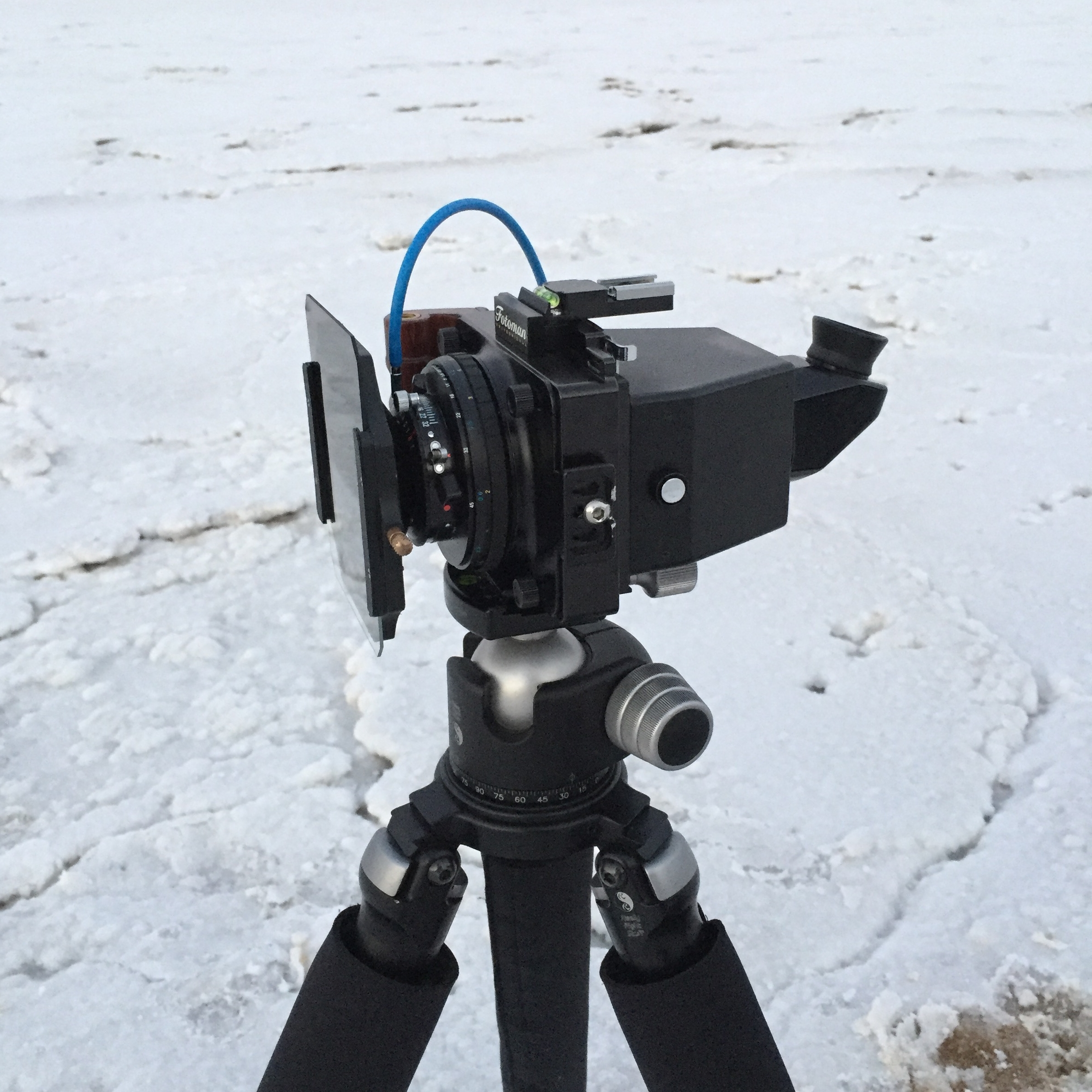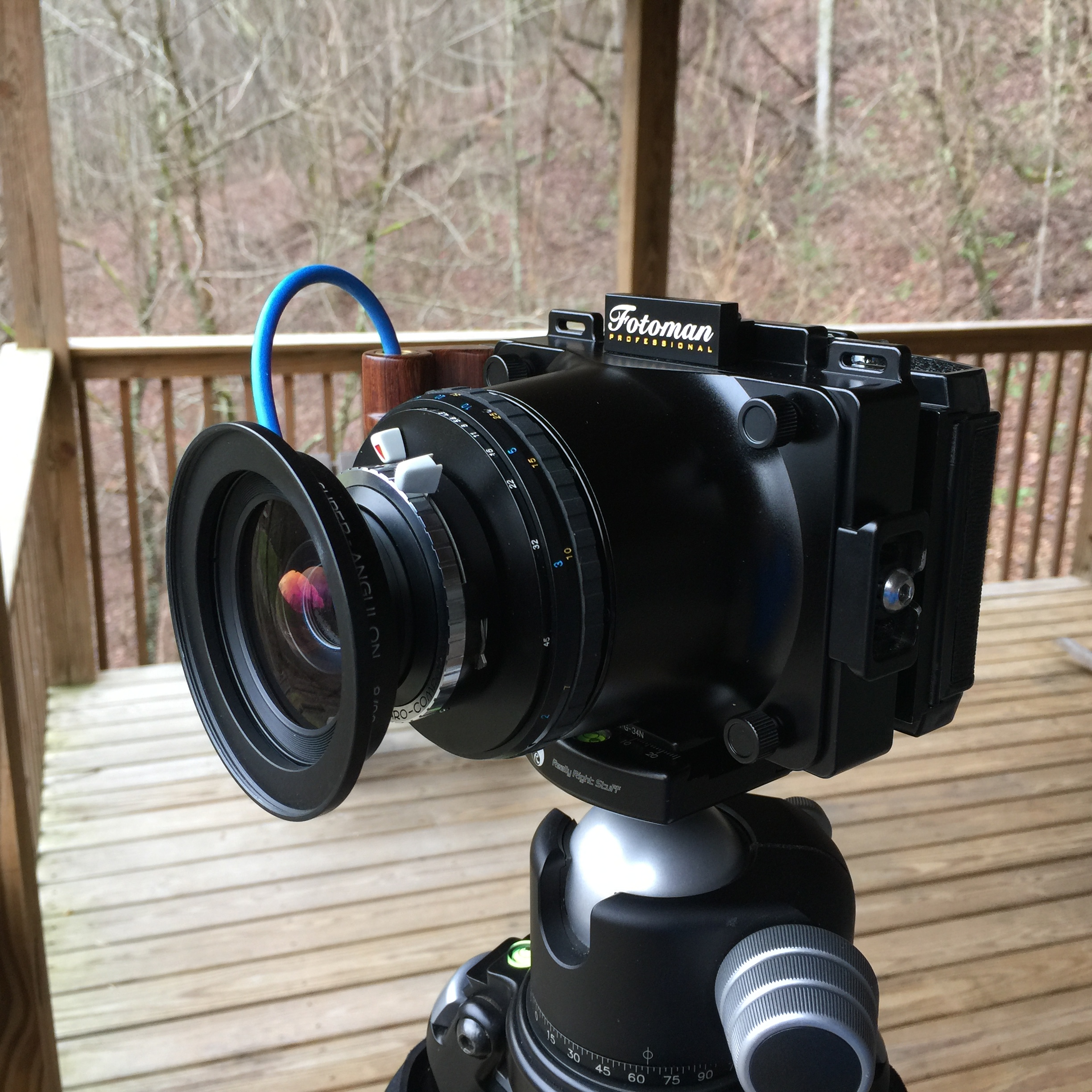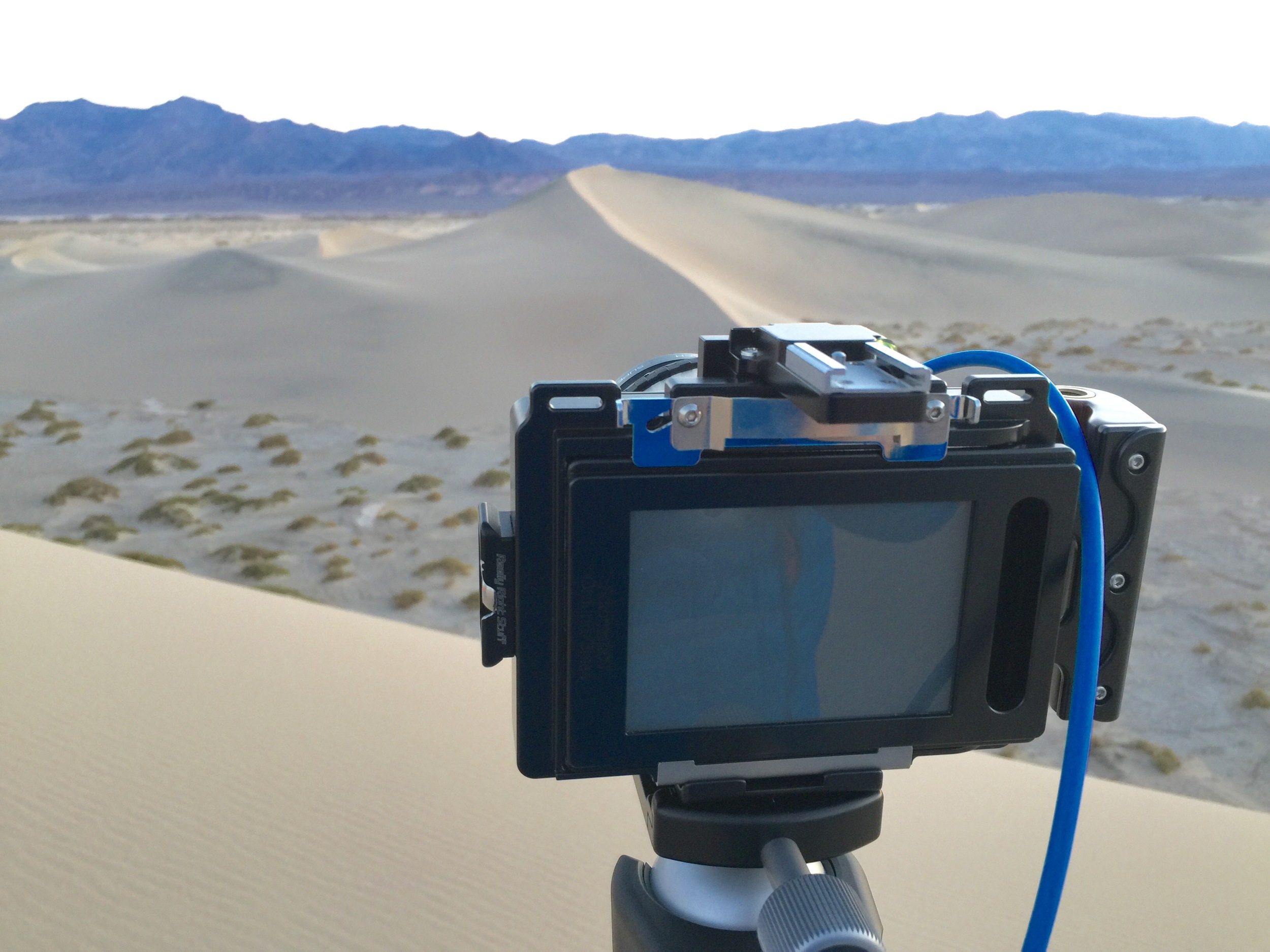The Fotoman 69HPS
The 69HPS is the second generation medium format point and shoot from Fotoman Professional. It produces images that are 5.6cm x 8.2cm and accepts large format lenses from 38mm to 300mm. It's very much like the Alpa TC, which is what turned me on to it. For anyone exploring a medium format point and shoot, which utilizes a helical focusing mechanism, the Alpa sets the stage as the industry standard. Unfortunately, these beautifully crafted works of art are crazy expensive. Even a used set up with film back and one lens can set you back upwards of 10K. The Fotoman become a very attractive option.
While researching this camera, I found that most Fotoman info on the web is coming from users of their 6x17 panoramic cameras. Most of these photographers agree that they are well made and are great tools at a reasonable price point. After shooting the 69HPS for over three years now, I can confirm this is the case for their 6x9 format as well.
The Fotoman 69HPS with 47mm f5.6 Super-Angulon XL and Voigtlander Viewfinder
PROS:
The Fotoman is a very lightweight 6x9 camera, weighing in at 766 grams for the body alone. Fully loaded, it's much closer to 1800 grams. Void of electronics or many moving parts, the body is all business and hits the mark between weight and durability. Made from 6061 aluminum, this is a very robust camera for use in the field. Any reliability issues during shoots will most likely come from your lens shutter or choice of film back.
Speaking of film backs, the Fotoman 69HPS utilizes the Graflok system. This means that Horseman style backs and viewers can be used. Finding used 6x7 and 6x9 backs is a breeze and are usually quite affordable in decent shape. The same goes for the lenses. Once you get a desired lens cone, you can adapt almost any large format lens to the body with the corresponding flange focal distance (i.e. lens mounting flange to film plane distance). Minor manufacturing variation can be adjusted for using a combination of spacers and a simple helical calibration exercise.
I use the 69HPS with two Really Right Stuff tripod plates to make the most out of the dual tripod sockets. This makes capturing the same scene in vertical and horizontal compositions much easier. I have shot this camera handheld before with decent results, but it spends most of the time on a tripod. The wood hand grip is very nice looking, and while it's not very ergonomic, it does the job.
Using the 8 Exposure Horseman Back (6x9)
CONS:
One negative with the system is that for each focal length lens you have, you must have a corresponding lens cone to focus properly. While the cone is the primary reason why this style of camera is considered a point and shoot, they are heavy. You are essentially is taking a 2x3" technical camera, removing the bellows, and replacing it with a fixed cone and helical focus ring. You really notice the weight using lenses with focal lengths over 120mm (or anything longer than normal field of view). I have also found that Schneider XL lenses optimized for use with 8x10 cameras make the camera too front heavy. In practice though, the Fotoman 69HPS will teach you to be comfortable with one lens...two tops.
One additional drawback I need to mention also applies to all large format cameras. The speed of taking photos is nothing compared to shooting with a Nikon SLR. I first compose the shot with the reflex viewer. I could also focus using the viewer, but instead use a 10x loupe on the ground glass to nail the focus. Then you have to install the film back, take light meter readings, set the shutter and aperture, and expose the film. It takes a while to get used to and you may double expose a few frames here or there. But after a few rolls, you develop a rhythm that keeps everything going smooth. One method I find that speeds up a shoot is to rely on your zone focusing by conducting enough tests to really understand performance at a given aperture. I have been able to zone focus a landscape many times with lenses that I am comfortable with.
Other Fotoman shooters have warned about disassembling the cone assembly and checking the fasteners for proper torque. I can attest that this is essential upon receiving the camera. On my first major trip with the 69HPS, to Iceland, the vibrations of the plane must have dislodged a few screws. The helical began to separate from the cone mount. I thankfully brought a spanner wrench and properly sized screwdrivers with me so I was able to fix it. I plan to write some how-to's in future posts so others can learn from what I have experienced.
A closing comment to keep in mind when considering a Fotoman camera is that info and support online is fairly scarce. While Fotoman Professional has been good to work with, their site is not user friendly.
Shooting Ektar 100 in Big Bend National Park
BOTTOM LINE:
If you are looking for a medium format point and shoot, but can not stomach the costs that come along with brands like Alpa, the Fotoman is a well made alternative. Depending on the selection of accessories and lenses, a full Fotoman set up can be up to 20% the cost of an Alpa TC. The lens options are great and I haven't had any focus issues caused by poor back alignment. Fotoman Professional has newer models that now accept digital backs and incorporate shift capabilities. I've enjoyed the 69HPS so much that I just recently acquired their 45SPS.
This is the antithesis of modern day digital SLR's. No focus peaking, no live view, just your skills behind the lens and a roll of film. A camera like this will force you to become a better, more careful photographer.
Using the Fotoman Viewfinder and 120mm f8 Super-Angulon XL









